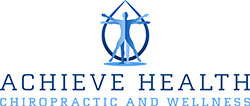Sports Injuries and Chiropractic Treatment
Have you ever played a sport that you loved and enjoyed? Have you had to sit on the sidelines due to an injury? Whether you play a team sport or you simply like to exercise by biking or jogging on the weekend, it’s not fun to sit out! Chiropractic care can increase recovery time of sports injuries.
Most muscles that are injured during physical activity are attached to the bones of the body. If the bones are out of normal alignment then the muscles are more likely to be injured due to excessive stretching and over extension. Chiropractic care can help maintain and re-align the bones of the body which can help speed healing time and possibly prevent problems in the future.
Sports Injuries and Chiropractic
The following is an article about chiropractic treatment and sports injuries published on WebMD.com.
”Chiropractors specialize in the non-drug treatment of musculoskeletal problems, including joint sprains and disk injuries. To some extent, the chiropractic approach to sports injuries overlaps that of traditional medical care: A chiropractor’s initial patient examination includes standard orthopedic and neurological tests to diagnose whether a particular pain is due to a strain, sprain or disk problem. When needed, chiropractors use x-ray to screen for fractures and other bone disorders, such as osteoporosis. Chiropractic treatment of sports injuries often includes widely used physical therapies such as ice for swelling and inflammation; and heat, ultrasound or electronic muscle stimulation for muscle strains and spasms.
Two contributions chiropractic has made to sports medicine include hands-on adjustment of spinal and other joints (to maintain a full range of motion) and a strong emphasis on the overall structural balance of the body. For example, when a muscle or joint is injured, the body naturally compensates, attempting to maintain balance and protect itself by tightening other muscles and joints. Chiropractic adjustments help restore the natural balance that was present before the injury.
To address your problem specifically, the persistent pain in your shoulder could be the result of a direct injury to the shoulder; it could also reflect your body’s compensation for spinal-joint movement restrictions in your neck. Similarly, pain in the hip could come from the hip itself, or be the result of lower back, ankle or knee problems. The key point is that the various parts of the body are interconnected: If a doctor examines and treats only the area of pain, he or she could be dealing with the symptom rather than the cause. For example, I have seen many cases of knee pain that cleared when I administered chiropractic adjustments to the lower back.
Within the past decade a number of studies published in the British Medical Journal have demonstrated the effectiveness of manual manipulation (the majority of which is done by chiropractors) for back, neck and shoulder pain. Interestingly, the treatment for shoulder pain involved not only manipulation of the shoulder itself, but also of nearby areas in the neck and upper back.
Research such as this has contributed to a climate where chiropractic now enjoys far-greater acceptance than in the past. In fact, chiropractic is now part of the sports-medicine program of the U.S. Olympic Committee.
Of course, you don’t have to be an Olympian to benefit from chiropractic care. Each year, 20 million Americans go to the chiropractor, 90 percent of them seeking treatment for musculoskeletal problems like back pain, neck pain, other joint and muscle pains and headaches.
In short, while mild, temporary soreness after exertion is nothing to worry about, persistent aches and pains are a sign that you are over stressing your muscles and joints. It’s important not to push your body to the limit while in pain, because this increases your risk of further injury. If your athletic activities are causing more than temporary pain, a chiropractor may be able to help.”
Original page of web MD article: //webMD.com/content/Article/44/1685_50043.htm


